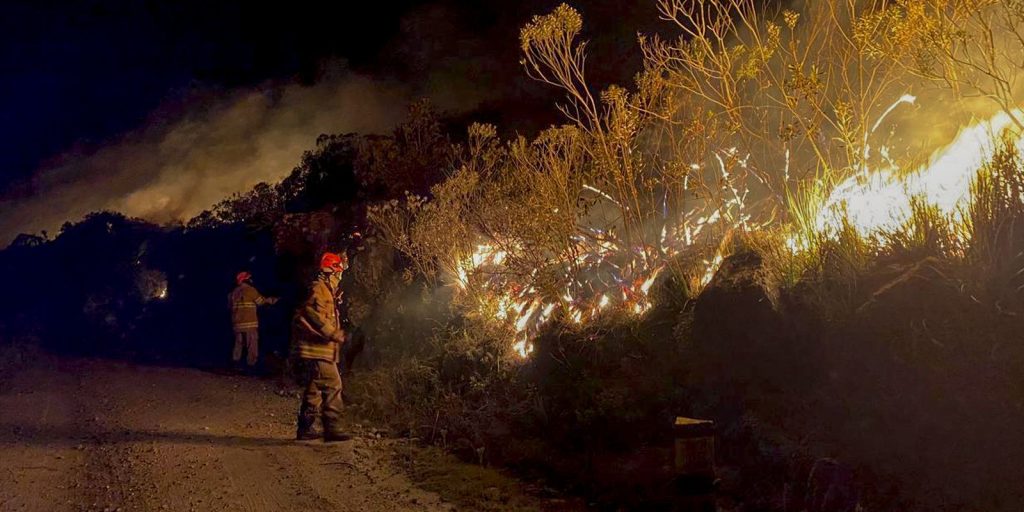Recently, the Mayor of Bogota, Carlos Fernando Galanannounced adjustments to water rationing in the country’s capital, following a decline in the level of the reservoir system that supplies water to the city.
According to the District report, the drought recorded in the Chingaza system during the month of August has considerably deteriorated the levels of its reservoirs, Chuza and Saint Raphaelwhich are currently at 46.67% of their capacity, as of September 12.
Also given that the onset of the La Niña climate phenomenon decreased its probability of occurrence, going from 70% in July-August to 55-60% starting at the end of this year, Andrea Devis-Morales, oceanologist, PhD in Oceanography and professor of the Earth System Sciences Program of the Faculty of Natural Sciences of the Universidad del Rosariosays that water rationing will need to be extended until at least the first quarter of 2025.
(You can read: There is a 71% chance that La Niña will arrive between September and November, says Ideam).
“Although the intensity of La Niña cannot be predicted, global climate conditions and the still high temperatures of the Pacific Ocean on its eastern edge suggest that this will be a weak to moderately intense anomalous event, which suggests that the rains that this climate anomaly could bring would not be enough to get out of this water crisis.“, the expert said.
The expert also warned that it is important to consider giving a limit to permits and licenses for water use for new commercial and industrial development projects.In this time of crisis, social and economic growth becomes unsustainable if there is not enough water for everyone.“.
Water rationing
There could be drought at the end of the year and beginning of 2025
The Bogotá savannah has been experiencing a water crisis since the beginning of this year, triggered by the event of El Niño phenomenonwhich caused a drastic decrease in rainfall in the national territory and, especially, in the Andean and Caribbean region.
“Although this warm event was relatively short, lasting less than a year, its effects on Colombia’s hydroclimatology were severe, as its intensity was very high, being the fourth most intense El Niño phenomenon on record. In addition to this, global conditions over the last five years have been extreme, with 2023 being the hottest year ever, leading to heat waves and very high air and ocean temperatures in our region.“Devis-Morales explained.
(Besides: 80% of Colombians believe that the biodiversity situation in the country is critical).
And the Chingaza reservoir system, which supplies more than 70% of the drinking water in Bogotáwas the most affected by these extreme weather conditions, reaching a historic low of 16% at the beginning of the year, which caused sector-by-sector rationing in the capital.
This strategy (which helped reduce the average daily consumption from over 18 cubic meters per second to around 16 cubic meters per second), the end of El Niño in May and the arrival of the mid-year rains, helped to get out of the worst water crisis experienced in the capital. However, This also caused rationing measures to be relaxed, so consumption increased and the rains that arrived were not enough to fill the reservoirs..

Chingaza
In fact, August was the driest month in the Chingaza system in the last 55 yearswhich caused a rapid decline in reservoir levels to occur again from the middle of that month.
“Given this, and taking into account that the rainy season has ended, and that the long-awaited La Niña, which could have brought more rain than normal to Colombian territory, has not arrived, what awaits us is a very dry period at the end of the year and the beginning of 2025.“warned the professor of the Earth System Sciences Program of the Faculty of Natural Sciences of the Universidad del Rosario.
(Read more: Reservoirs in crisis: Bogotá mayor warns that more drastic measures are coming).
The expert explains that The maximum water levels of the Chingaza system always occur in the months of June and July, and in previous years these ranged between 70% and 100%which somehow allowed for sufficient water to be available during the following months, even in February and March, when the dry season ended and the reservoirs had stored water volumes of around 40%.
“In mid-2023, the system’s peak level was around 65%, and despite this, we reached the lows of 16% in early 2024. This year, the peak level reached in mid-August was 52.2%, so it is easy to think that conditions in early 2025 will be even more critical than those experienced this entire year.“, the expert pointed out.
PORTFOLIO


















